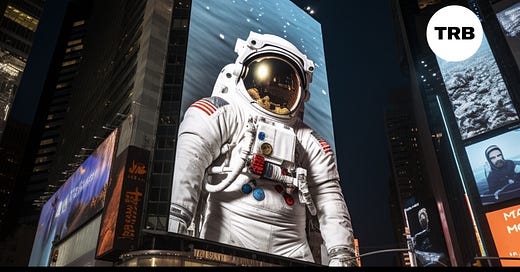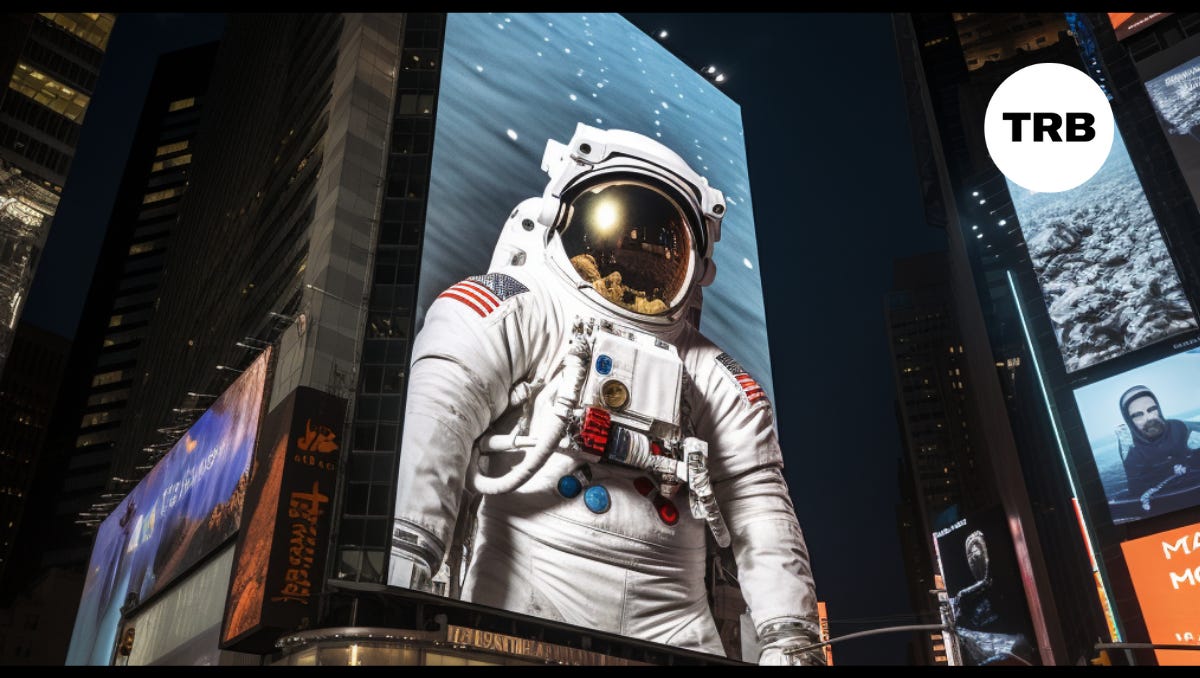Welcome to Advertising Week. For the next four days, Mike Shields from
is joining me to detail what we can glean from a sprawling “tentpole” event that most walkup stories will tell you is really about the meetings and networking. (It’s fitting that the founders of Advertising Week also operate the top hot-dog eating contest in the world.) We’ll try instead to look for the signals that inevitably are sent to the marketplace during the industry’s marquee events.On Wednesday, I’ll be speaking at the Self-Serve Summit 2023 powered by DanAds. My talk is taking a look at all the post-ZIRP distortions that are now being washed away as digital media moves on from the scale era to what I’m calling the “more-with-less” era. The event from 9am to 6pm at Glasshouse Chelsea. Visit the Self-Serve Summit site for the full agenda and to get your spot.
In today’s newsletter, I spoke with Brian Wieser to kick off the week. Brian writes the must-read
in his still-new role as an independent analyst. I regularly interviewed Brian over the years for his deep dives into ad spending trends. I always found he understood both sides of the equation far better than the “great quarter, guys” equities analysts who often missed the nuances of how the industry really operates.Brian calls the Meeker slide “the unfortunate slide that so many people in the industry relied on for so long and even now will reference.”
First up, a message from Ex.co.
Upgrade your video strategy
As revenue-driven businesses, publishers need to keep their bottom line top-of-mind when selecting an online video platform. EX.CO’s new guide for publishers: “Choosing the Right Online Video Platform” demystifies the selection process and empowers you with the knowledge and insights you need to make an informed decision.
The time-spent myth
Before the Lumascape, there was another go-to conference and pitch deck slide for anyone betting on what was then called web advertising. The slide, updated annually by the financial analyst Mary Meeker, showed twin bar charts of time spent and budget spent by medium.
The message was clear: the internet would win, it was just a matter of timing. The time spent gap did close, although a disproportionate amount of gains went to tech platforms rather than web publishers. The chart was always wrong, argued media analyst Brian Wieser in an episode of The Rebooting Show. Time is simply one variable in assessing the value of a media impression:
“It speaks to an incorrect framework. You look at the historical data, you ask why this happened, and you try to make sure the model mirrors why decisions are made. The common narrative was always that it's time. That's what drives the money. If that were true, radio would be a much bigger business.”
I always found the slide a handy metaphor for an industry that’s long struggled to square its heritage in creativity with the cold mathematical framework of technology. Over time, I heard less about “the big idea” and “the power of creativity” and far more about supply chains and data clean rooms. To oversimplify, in DR vs brand, DR won and it wasn’t particularly close.
The truth is the media industry is complex and decisions are made based on all kinds of factors not easily crammed into a spreadsheet. In fact, “there are subjective factors that tend to drive media plans,” as Brian notes.
Instead, media plans often begin at the category level that is only loosely tied to time spent. That’s why the top player in a category has historically gotten a disproportionate share of budgets, as pointed out by Troy on a recent People vs Algorithms episode. “If you get the first look at a wallet, you will get a higher share of it,” Brian added.
Check out the full episode for more on this; why publishers face structural, not cyclical ad pressures; the efficiency of the Upfronts; and the impact of data restrictions on digital ad growth.
Elevate brand impact
The big question on every marketer’s mind: how can we capture audience attention and translate it into measurable business outcomes?
Onyx by Outbrain™ is a new branding platform that uses the powerful trifecta of environment, technology, and ad experiences to maximize user attention from every campaign, for better brand impact.
The storylines of Advertising Week
Mike Shields peels back the layers on what people say in public and what they talk about in private in this dispatch:
Advertising Week is billed as a celebration of a uniquely creative-focused business. It’s also a marketing orgy on its own: a symbol of the industry’s excesses and inherent salesmanship. As with many events of this kind, there is often a marked difference between what is being presented and discussed publicly, and what people are really talking about behind closed doors.
A great example of this are sessions such as “How Marketers Can Future-Proof the Creative Production Process.” There will surely be lots of talk about how agencies and brands are harnessing AI to produce ads at a faster clip, using far more data than in the past. Privately of course, there is growing anxiety among creative agencies that AI is coming for their jobs, and award-winning work will be shoved aside by machines optimizing towards the right shade of yellow in a banner ad. And for publishers, AI threatens the most stable part of the media ecosystem: search.
Here’s a guide to what you’ll read in panel recaps and what’s being discussed later over cocktails.
On stage: The industry is leaning into a privacy-first means of engaging with customers
“It starts with the consumer” will surely be a phrase that is uttered repeatedly this week, as most brands and ad tech executives look to talk up how respectful and transparent their ad tactics are, and how ready they are for a post-cookie world.
At cocktails: Advertisers either aren’t ready for signal loss
There are widespread fears that digital advertising will never fully reach its ‘one-to-one’ marketing level, and that it may actually become far less effective over time. Plus, the specter of regulation and fines loom for many.
On stage: TV advertising is innovating like never before in areas like measurement and targeting
The Advertising Week agenda is littered with content touting the TV business’s push into better targeting, advanced measurement and cutting edge technology like clean rooms. The overall message: with streaming, TV advertising will be just like digital, only better.
At cocktails: Things are messy and getting messier
The TV business is facing crises on multiple fronts. Companies like WarnerDiscovery have been cut to the bone. Linear viewership is tanking, and the recent writers strike surely didn’t help. No one is quite sure if the streaming business model will ever be as lucrative as the classic pay TV model, which is also under fire. Meanwhile, for all the talk about sophisticated targeting and measurement, the ad experience in connected TV is lousy - and most forms of true ‘addressable’ TV advertising are being embrace slowly.
On stage: Advertising continues to be a driving force in shaping society and the planet for better.
Once again, sustainability is a big theme this year - both in terms of the way products are made and ads are delivered. And of course there will be numerous discussions on how marketers can support news, foster diversity and help the less fortunate. Among the panels that stand out is the boldly titled: Loudly Calling “Bullshit” on Brand Wokeness/Brokeness.
At cocktails: I should have gone into real estate
Following the Bud Light fiasco, marketers are running scared, and are likely to remain more cautious than ever. The terrorist attacks in Israel and impending invasion of Gaza is a minefield for brands. (See McDonald’s franchisees in the Middle East going very different ways.) Few will admit it in public, but many people in leadership wonder if they went too far into politics and social issues. But that genie is out of the bottle now, even if marketers want to go back to selling toothpaste. — Mike Shields
Thanks for reading. We’ll be tomorrow with another dispatch. Send me a note with your feedback by hitting reply.








What am I supposed to do for the next ten years now?!?!
I have to double check my projections strategy decks!
Loving the rebooting groove, Brian. Will have some fun stuff to share with you soon. And don’t worry, it will include AI.